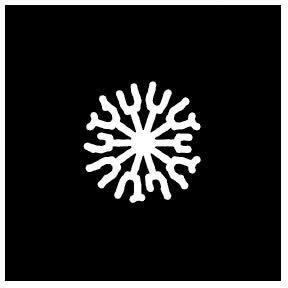 | ||
Similar Belousov–Zhabotinsky reaction, Emergence, Patterns in nature | ||
The science of pattern formation deals with the visible, (statistically) orderly outcomes of self-organization and the common principles behind similar patterns in nature.
Contents
- Examples
- Biology
- Anterior posterior axis patterning in Drosophila
- Growth of Colonies
- Vegetation patterns
- Chemistry
- Physics
- Mathematics
- Computer graphics
- References
In developmental biology, pattern formation refers to the generation of complex organizations of cell fates in space and time. Pattern formation is controlled by genes. The role of genes in pattern formation is an aspect of morphogenesis, the creation of diverse anatomies from similar genes, now being explored in the science of evolutionary developmental biology or evo-devo. The mechanisms involved are well seen in the anterior-posterior patterning of embryos from the model organism Drosophila melanogaster (a fruit fly), one of the first organisms to have its morphogenesis studied, and in the eyespots of butterflies, whose development is a variant of the standard (fruit fly) mechanism.
Examples
Examples of pattern formation can be found in Biology, Chemistry, Physics and Mathematics, and can readily be simulated with Computer graphics, as described in turn below.
Biology
Animal markings, segmentation of animals, phyllotaxis, neuronal activation patterns like tonotopy, and predator-prey equations' trajectories are all examples of how natural patterns are formed.
In developmental biology, pattern formation describes the mechanism by which initially equivalent cells in a developing tissue in an embryo assume complex forms and functions. The process of embryogenesis involves coordinated cell fate control. Pattern formation is genetically controlled, and often involves each cell in a field sensing and responding to its position along a morphogen gradient, followed by short distance cell-to-cell communication through cell signaling pathways to refine the initial pattern. In this context, a field of cells is the group of cells whose fates are affected by responding to the same set positional information cues. This conceptual model was first described as the French flag model in the 1960s.
Anterior-posterior axis patterning in Drosophila
One of the best understood examples of pattern formation is the patterning along the future head to tail (antero-posterior) axis of the fruit fly Drosophila melanogaster. The development of this fly is particularly well studied, and it is representative of a major class of animals, the insects. Other multicellular organisms sometimes use similar mechanisms for axis formation, although signal transfer between the earliest cells of many developing organisms is often more important than in Drosophila.
See Drosophila embryogenesisGrowth of Colonies
Bacterial colonies show a large variety of beautiful patterns formed during colony growth. The resulting shapes depend on the growth conditions. In particular, stresses (hardness of the culture medium, lack of nutrients, etc.) enhance the complexity of the resulting patterns.
Other organisms such as slime moulds display remarkable patterns caused by the dynamics of chemical signalling.
Vegetation patterns
Vegetation patterns such as tiger bush and fir waves form for different reasons. Tiger bush consists of stripes of bushes on arid slopes in countries such as Niger where plant growth is limited by rainfall. Each roughly horizontal stripe of vegetation absorbs rainwater from the bare zone immediately above it. In contrast, fir waves occur in forests on mountain slopes after wind disturbance, during regeneration. When trees fall, the trees that they had sheltered become exposed and are in turn more likely to be damaged, so gaps tend to expand downwind. Meanwhile, on the windward side, young trees grow, protected by the wind shadow of the remaining tall trees.
Chemistry
Physics
Bénard cells, Laser, cloud formations in stripes or rolls. Ripples in icicles. Washboard patterns on dirtroads. Dendrites in solidification, liquid crystals. Solitons.
Mathematics
Sphere packings and coverings. Mathematics underlies the other pattern formation mechanisms listed.
Computer graphics
Some types of automata have been used to generate organic-looking textures for more realistic shading of 3d objects.
A popular photoshop plugin, KPT 6, included a filter called 'KPT reaction'. Reaction produced reaction-diffusion style patterns based on the supplied seed image.
A similar effect to the 'KPT reaction' can be achieved with convolution functions in digital image processing, with a little patience, by repeatedly sharpening and blurring an image in a graphics editor. If other filters are used, such as emboss or edge detection, different types of effects can be achieved.
Computers are often used to simulate the biological, physical or chemical processes that lead to pattern formation, and they can display the results in a realistic way. Calculations using models like Reaction-diffusion or MClone are based on the actual mathematical equations designed by the scientists to model the studied phenomena.
